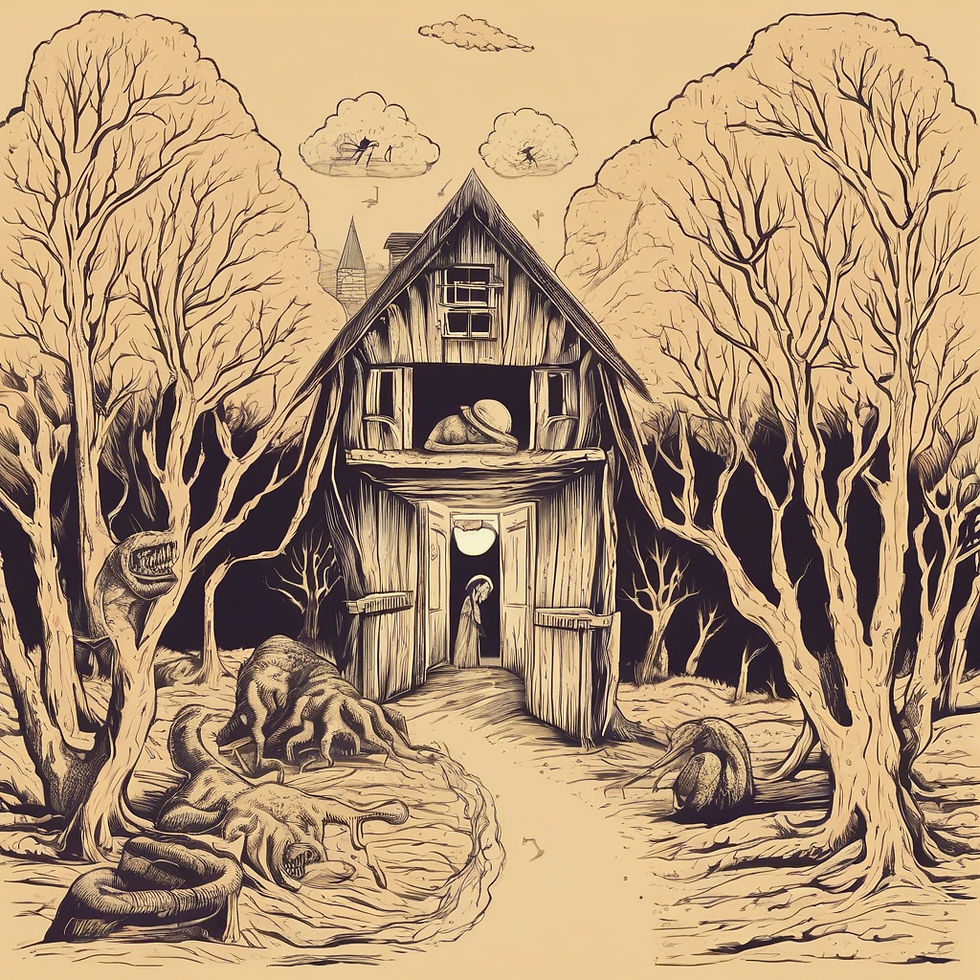
Horror fiction has long held a special place in the hearts of readers, offering the kind of immersive, slow-burn terror that seeps into the mind and lingers long after the final page. But when Hollywood comes knocking, these same stories often struggle to retain their original impact. While some adaptations are faithful and chilling, many horror books lose their essence when translated to the screen. So, what is it about horror fiction that makes it so difficult to adapt? And why do so many great horror books feel watered down when they reach the big (or small) screen?
The Power of Imagination vs. Visual Representation
One of the biggest strengths of horror literature is its ability to play on the reader's imagination. In books, the scariest monsters are often those left partially unseen, lurking in the shadows of our minds. H.P. Lovecraft famously emphasized the fear of the unknown, an idea that translates beautifully on the page but can feel underwhelming on screen.
When horror is adapted to film, everything becomes visual, and often, what we imagine is far scarier than anything that can be shown. Take Stephen King’s It—the 2017 and 2019 films did a commendable job bringing Pennywise to life, but many readers still argue that the novel’s surreal horror, especially in the cosmic, reality-bending sections, couldn’t be fully captured on film.
Pacing: The Slow Burn vs. Instant Gratification
Horror fiction thrives on pacing. A novel allows time for dread to build, letting the reader sink into the atmosphere. The tension can stretch across chapters, making every reveal more terrifying. In contrast, films are limited by runtime, forcing filmmakers to condense slow-burning terror into quick, punchy moments.
For example, Shirley Jackson’s The Haunting of Hill House is a psychological masterpiece that relies heavily on unsettling descriptions and the unraveling mental state of its protagonist. While the 1963 adaptation did an excellent job maintaining the novel’s eerie tone, the 1999 remake abandoned subtlety in favor of CGI ghosts and jump scares, losing what made the book terrifying in the first place.
Character Depth and Inner Monologues
A major challenge in adapting horror novels is conveying a character's inner turmoil. Many horror books rely on internal monologues to build suspense, making the reader feel the protagonist’s fear firsthand. Film, being a visual medium, struggles with this, often replacing psychological horror with external threats.
For instance, in American Psycho, Bret Easton Ellis’s novel drags the reader deep into the twisted mind of Patrick Bateman, leaving us questioning what’s real and what isn’t. The 2000 film adaptation is fantastic in its own right, but it loses much of the novel’s unreliable narration and descent into madness.
The Sanitization of Horror
Another reason horror books often lose their bite in adaptation is Hollywood’s tendency to tone things down. Whether due to studio interference, rating concerns, or a desire for mainstream appeal, many horror films end up feeling less intense than their source material.
Take Hellraiser, Clive Barker’s grotesquely imaginative novel The Hellbound Heart, which delves into themes of pain, pleasure, and obsession. The 1987 film was a solid adaptation, but as the franchise continued, the focus shifted toward Pinhead as a slasher icon rather than the complex, terrifying figure he was originally intended to be.
Similarly, World War Z by Max Brooks is a gripping oral history of a zombie apocalypse, rich with social commentary. The film adaptation, however, abandoned the book’s unique structure and turned it into a standard action flick, losing much of its depth.
The Rare Success Stories
Of course, not all adaptations fail. Some manage to capture the essence of the source material while making necessary changes for the medium.
The Exorcist (1973) remains one of the most faithful horror adaptations ever made, retaining the novel’s slow-building tension, religious horror, and psychological depth. Likewise, The Silence of the Lambs successfully translated Thomas Harris’s chilling novel into an Oscar-winning masterpiece.
More recently, Mike Flanagan’s Doctor Sleep (2019) managed to bridge the gap between King’s novel and Kubrick’s The Shining, creating an adaptation that respected both sources while forging its own path.
Conclusion: The Eternal Struggle of Adaptation
Horror books and horror films are two very different beasts, each with their own strengths and limitations. While some adaptations are able to maintain the spirit of the source material, many lose something vital in the transition—whether it’s the psychological depth, the slow-building dread, or the power of the reader’s imagination.
For horror fans, the best approach is often to appreciate both mediums for what they are. A great horror book offers an intimate, immersive terror that no film can fully replicate. A great horror movie, on the other hand, can provide a visceral, communal experience that literature can’t quite match. The trick is to enjoy both—just don’t expect Hollywood to always get it right.
What are your favorite (or least favorite) horror adaptations? Let’s discuss in the comments!
Be sure to also check out my latest psychological thriller novel Newcomers!
Or visit my online bookstore and check out all my work in all formats.

Comments